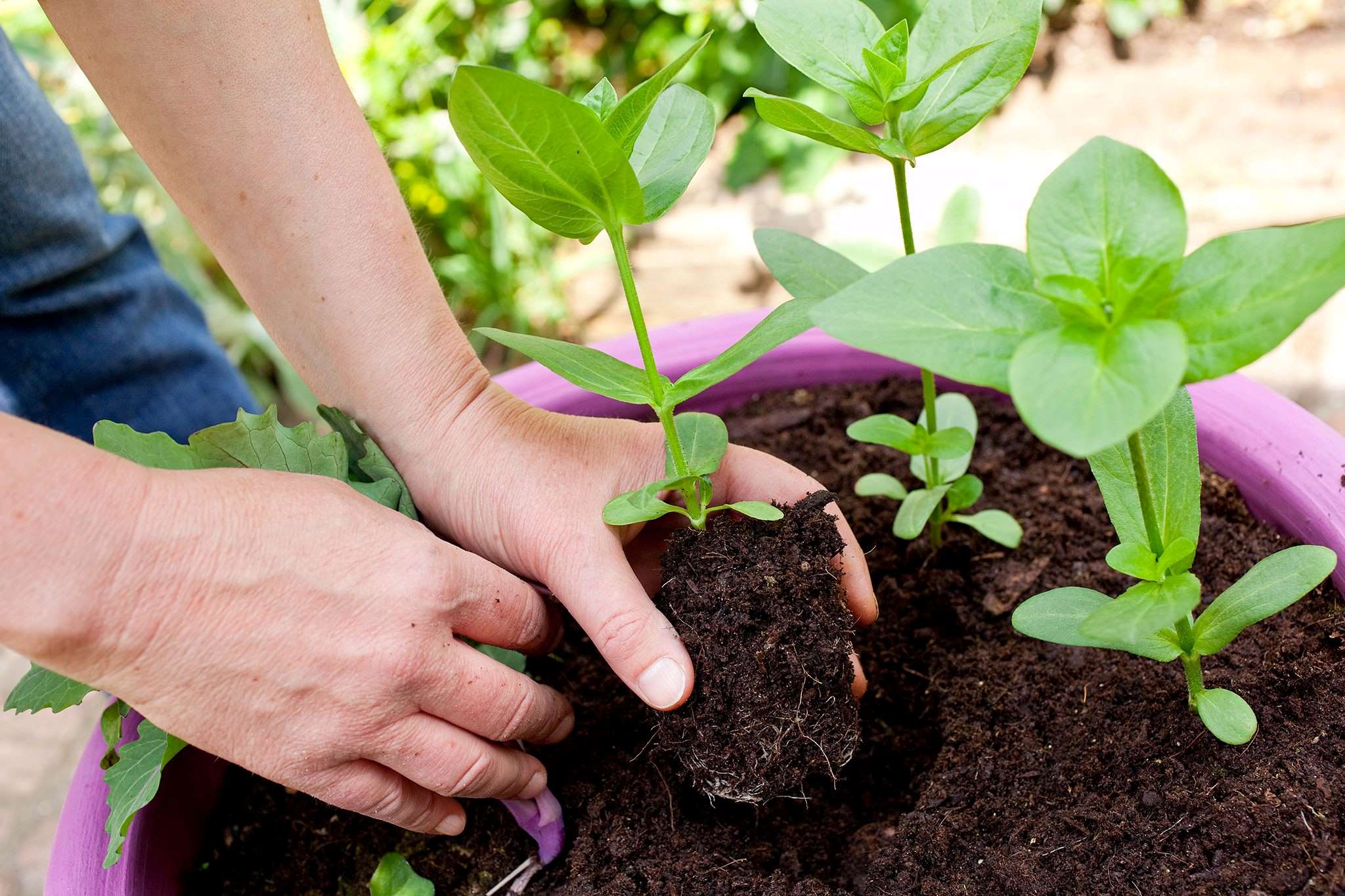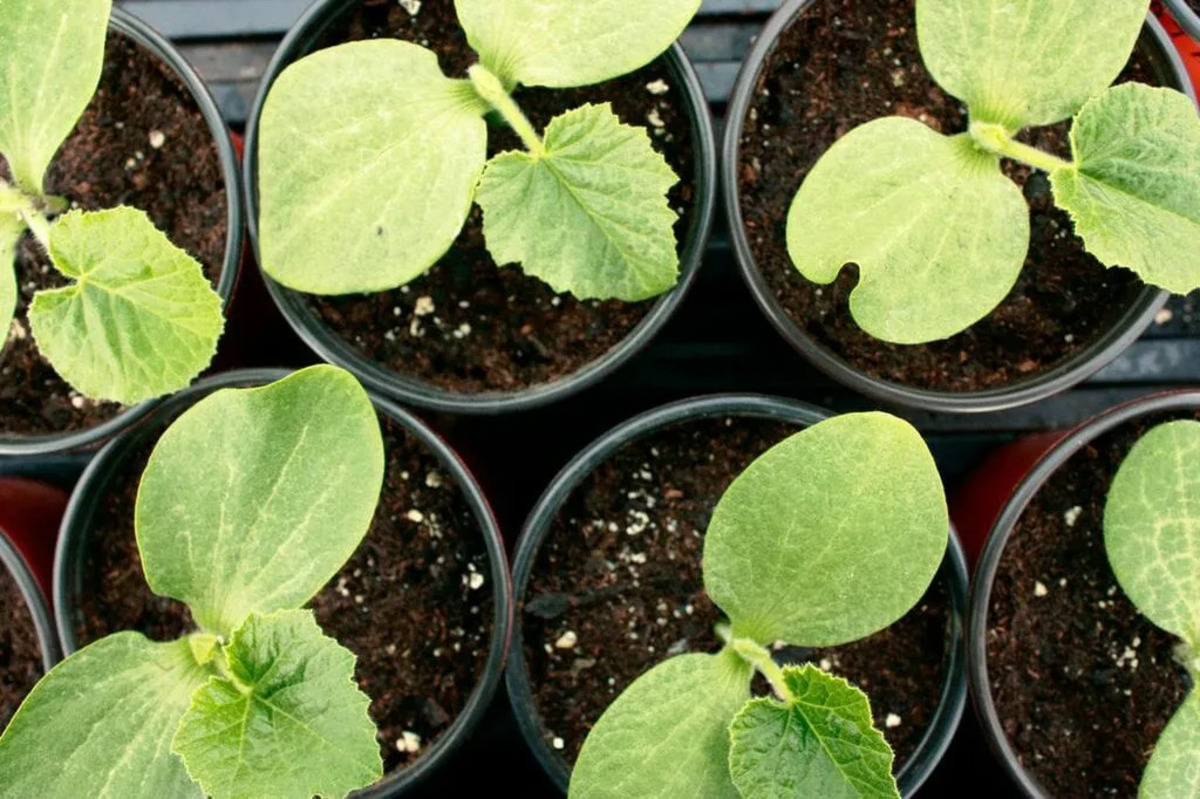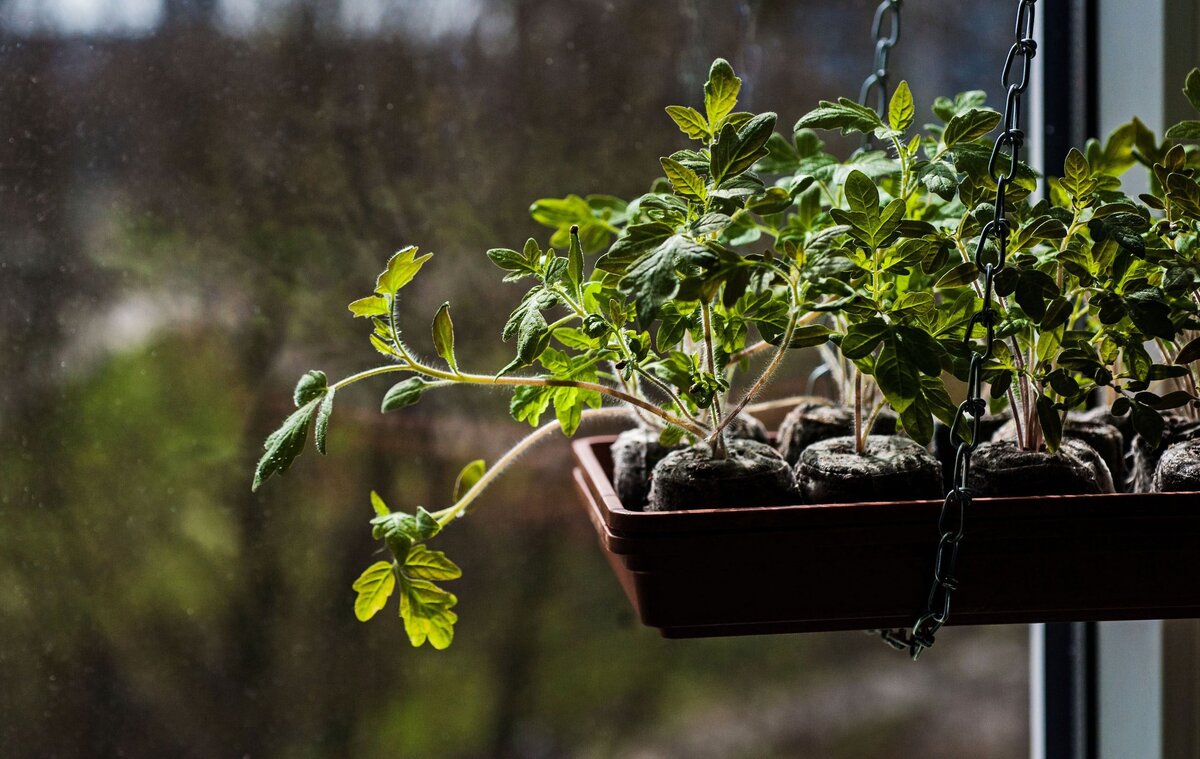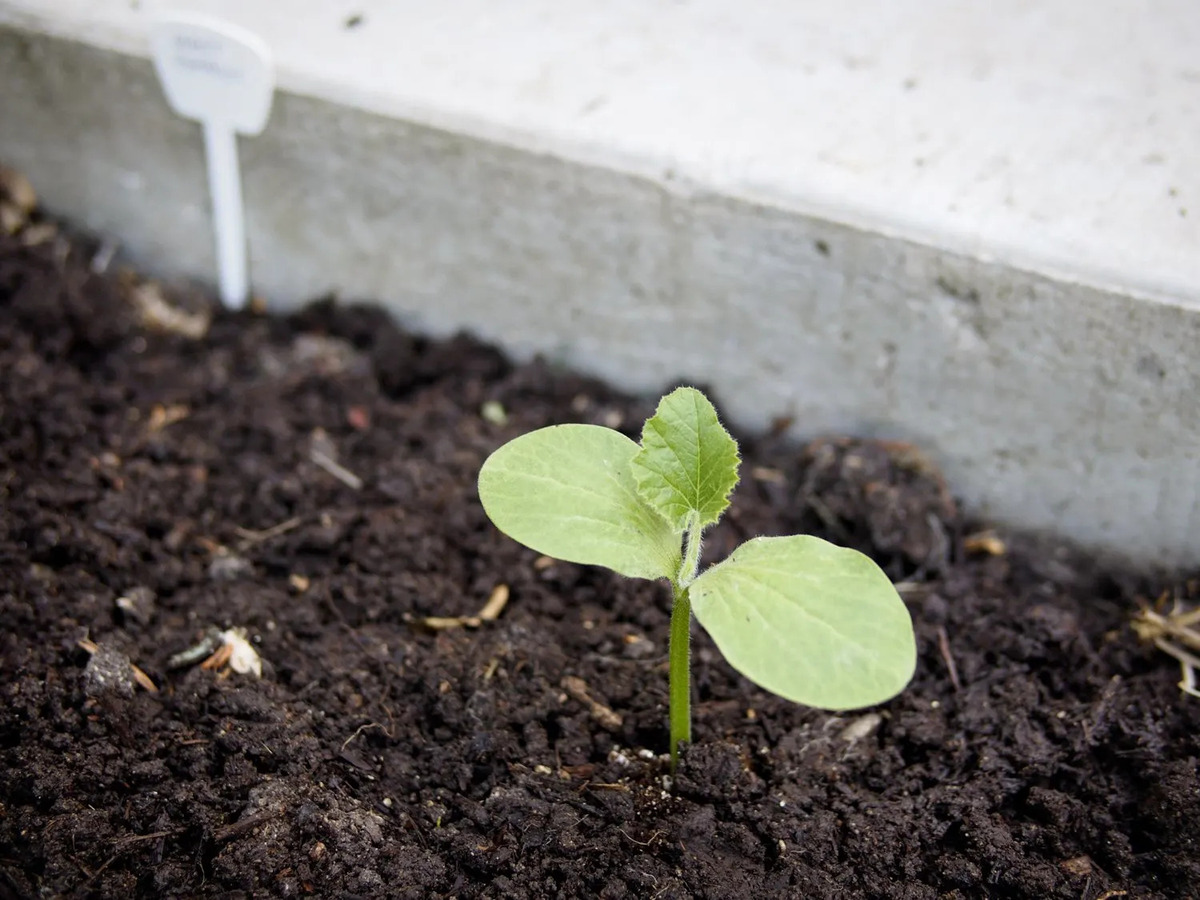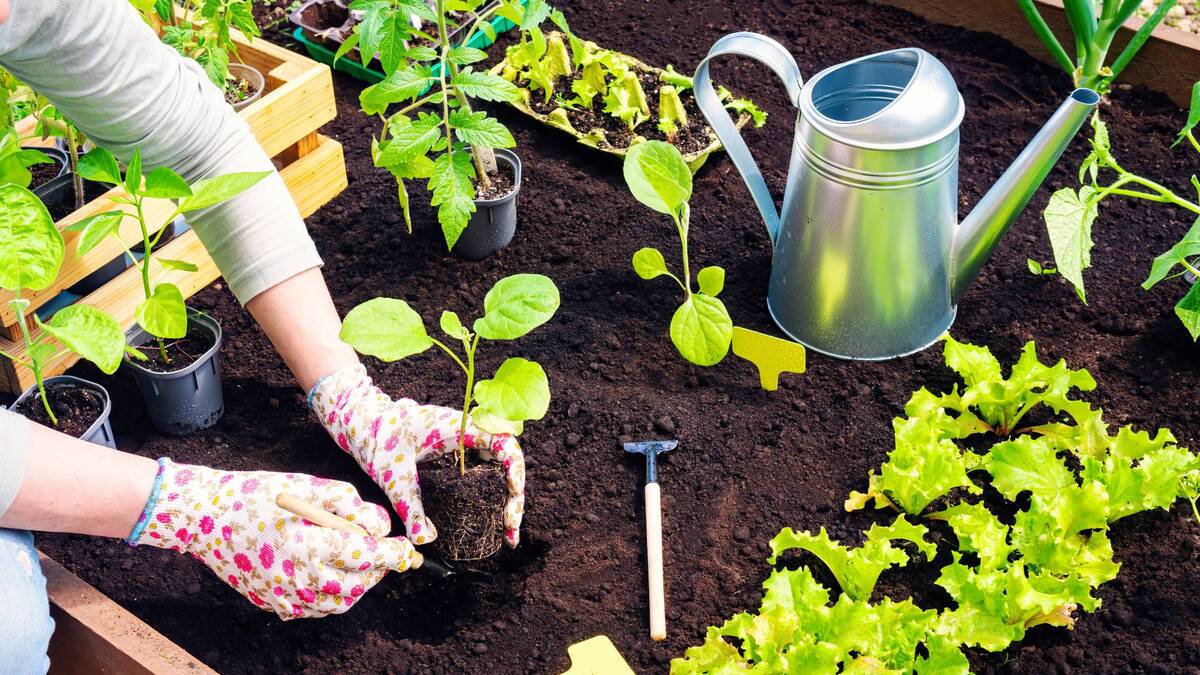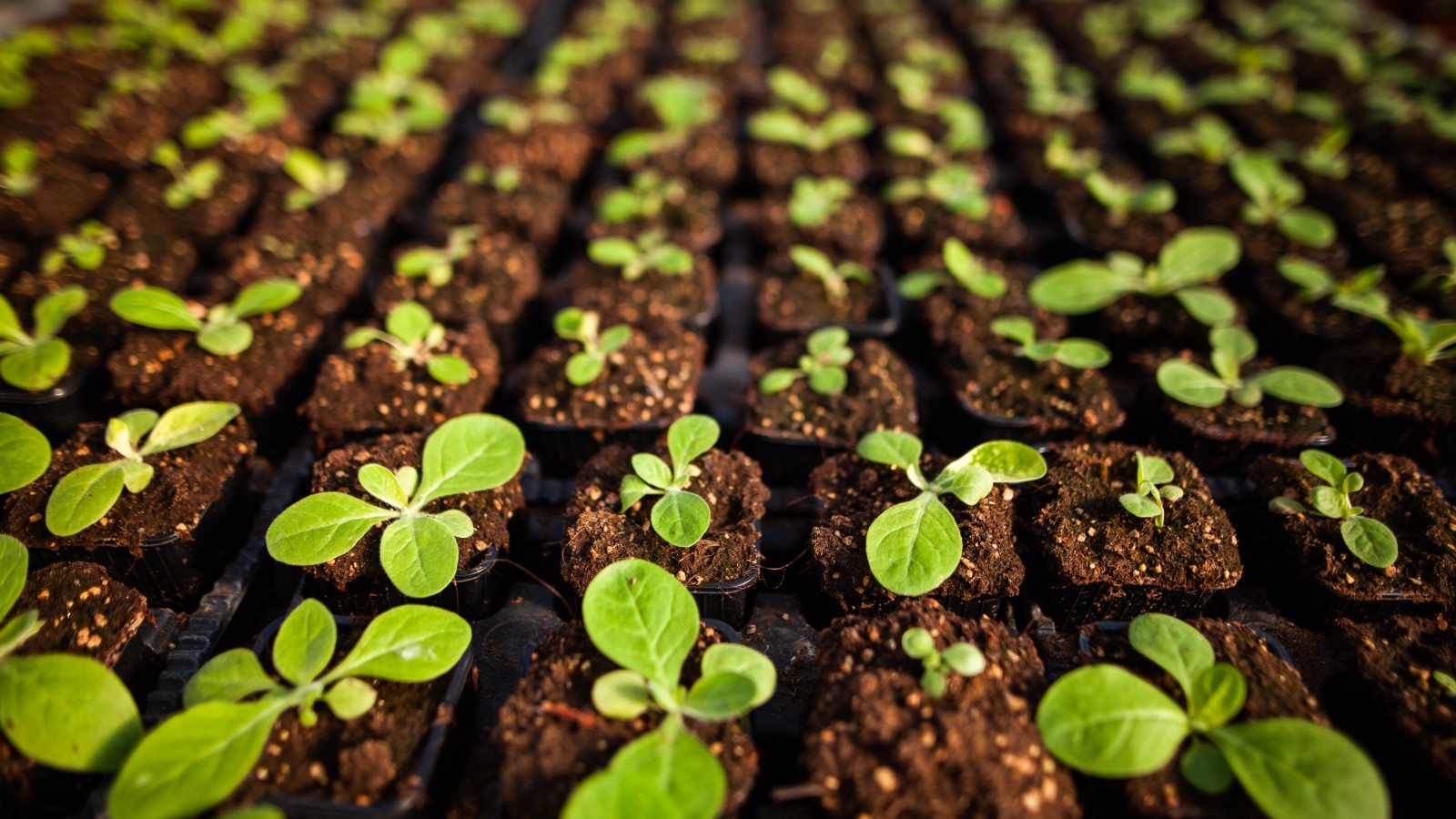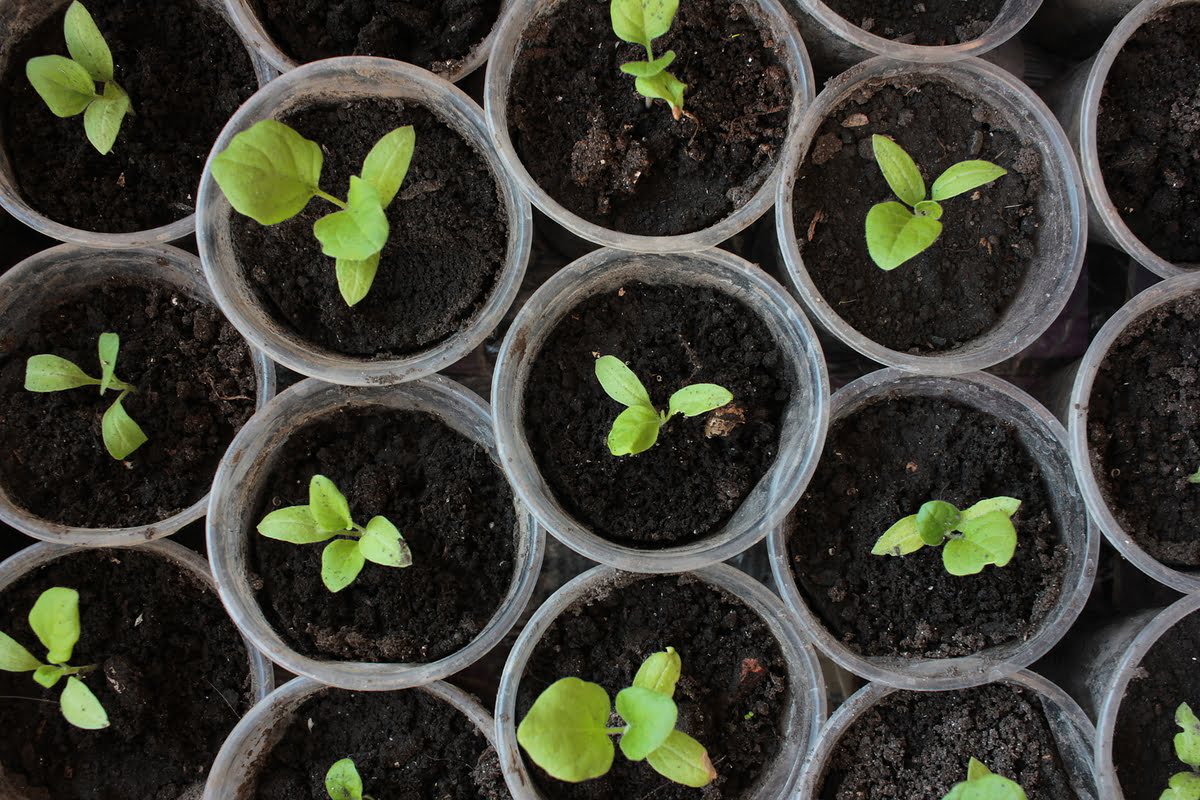Home>Gardening Techniques>Plant Care>When To Plant Out Zinnia Seedlings
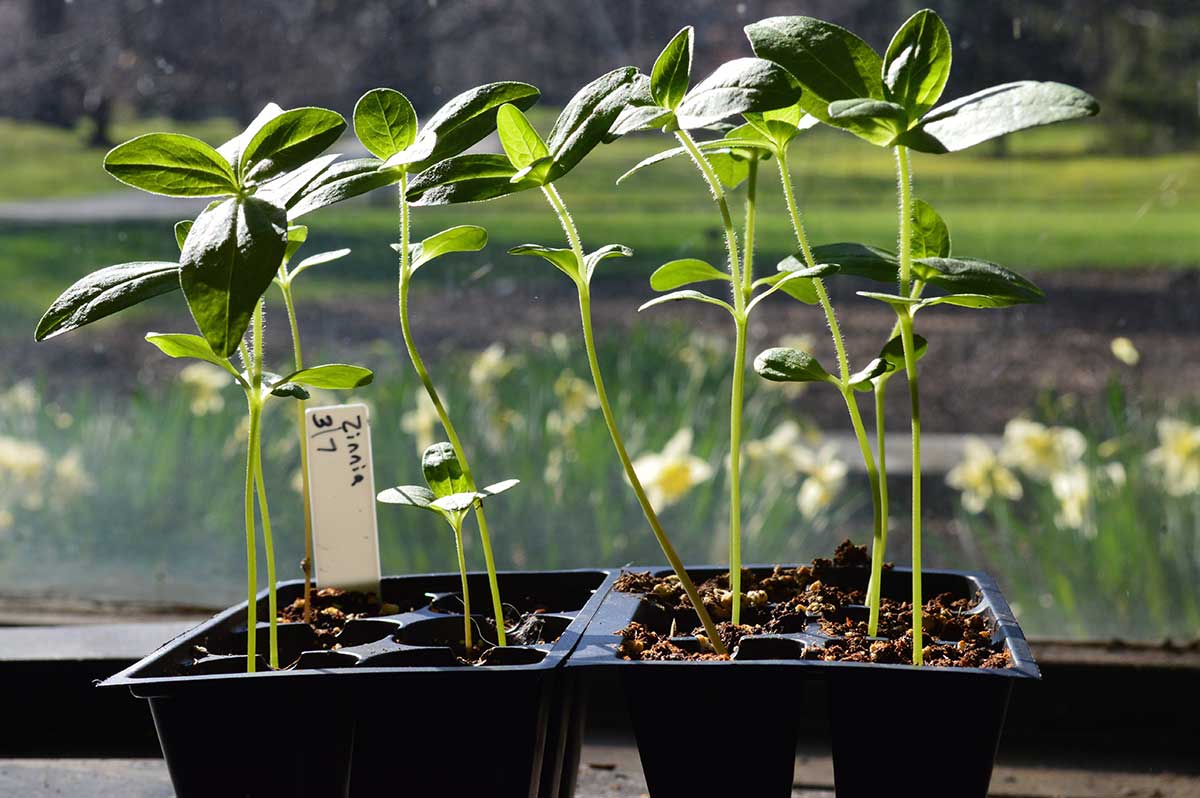

Plant Care
When To Plant Out Zinnia Seedlings
Published: January 6, 2024
Discover when to plant out your zinnia seedlings and get expert tips on plant care to ensure beautiful blooms.
(Many of the links in this article redirect to a specific reviewed product. Your purchase of these products through affiliate links helps to generate commission for Chicagolandgardening.com, at no extra cost. Learn more)
Table of Contents
- Introduction
- Factors to Consider Before Planting Out Zinnia Seedlings
- Best Time for Planting Out Zinnia Seedlings
- Preparing the Soil for Zinnia Seedlings
- Transplanting Zinnia Seedlings Outdoors
- Ensuring Proper Care for Zinnia Seedlings After Planting
- Common Problems and Troubleshooting When Planting Out Zinnia Seedlings
- Conclusion
Introduction
Planting zinnia seedlings is an exciting and rewarding experience for any plant lover. Zinnias, with their vibrant colors and beautiful blooms, add a touch of joy and charm to any garden or landscape. However, knowing the right time to plant out zinnia seedlings is crucial for their successful growth and development.
Before diving into the process of planting out zinnia seedlings, there are a few factors to consider. The optimal time for planting out zinnia seedlings depends on various environmental factors, such as temperature, soil conditions, and the risk of frost. Additionally, the health and readiness of the seedlings themselves play a significant role in determining when they are ready to be transplanted outdoors.
This article will guide you through the best time to plant out zinnia seedlings, how to prepare the soil for successful growth, the process of transplanting the seedlings, and the essential care tips after planting. By following these guidelines, you can ensure that your zinnia seedlings thrive, producing an abundance of beautiful flowers to enjoy throughout the growing season.
Factors to Consider Before Planting Out Zinnia Seedlings
Before planting out zinnia seedlings, it is important to take certain factors into consideration to ensure their successful growth and development. By considering these factors, you can provide the best possible environment for your zinnias to thrive.
1. Temperature: Zinnias are warm-season flowers and require temperatures above 60°F (15°C) for optimal growth. It is important to wait until the danger of frost has passed before planting out the seedlings. This is typically around the last frost date in your area, which can vary. Make sure to check your local climate information or consult with local gardening experts to determine the best time for planting zinnias in your region.
2. Soil Conditions: Zinnias prefer well-draining soil with a pH between 5.5 and 7.0. Before planting, ensure that the soil is loose and free from any clumps or debris. It is advisable to add organic matter or compost to improve soil fertility and enhance drainage. Conduct a soil test to determine if any amendments, such as lime or sulfur, are needed to adjust the pH level.
3. Sunlight: Zinnias thrive in full sunlight, so it is essential to choose a location in your garden that receives at least 6 to 8 hours of direct sunlight daily. Avoid planting them in shaded areas, as this can result in weak and leggy growth, with fewer flowers.
4. Space: Zinnias require adequate space for optimal growth. When planting out the seedlings, make sure to space them according to the recommended distance for the specific variety you are growing. Proper spacing allows for proper air circulation, reducing the risk of diseases and promoting healthy growth.
5. Watering: Adequate watering is crucial for zinnias, especially during the establishment phase. Before planting out the seedlings, ensure that the soil is well-watered. After transplanting, continue to water regularly, keeping the soil evenly moist but not waterlogged. Avoid overhead watering, as this can promote the spread of diseases. Instead, use a drip irrigation system or water at the base of the plants.
By considering these factors, you can create an ideal environment for your zinnia seedlings, setting them up for success in their new outdoor home.
Best Time for Planting Out Zinnia Seedlings
The timing of when to plant out zinnia seedlings plays a crucial role in their overall growth and success. While zinnias are warm-season flowers, it is important to wait until the weather conditions are optimal for their growth. Here are some guidelines to help you determine the best time for planting out your zinnia seedlings.
1. Frost Danger: Zinnias are sensitive to frost, so it is crucial to wait until the danger of frost has passed before planting them outdoors. Generally, zinnias should be planted out after the last frost date in your area. You can find this information by consulting your local agricultural extension office or referring to climate data specific to your region.
2. Soil Temperature: Another important consideration is soil temperature. Zinnias thrive in warm soil, with temperatures between 60°F (15°C) and 70°F (21°C). If you plant them in soil that is too cold, it can stunt their growth and increase the risk of transplant shock. Ensure that the soil has warmed up sufficiently before transplanting your zinnia seedlings.
3. Daytime and Nighttime Temperatures: In addition to soil temperature, it is essential to consider the daytime and nighttime temperatures. Zinnias prefer temperatures above 60°F (15°C) during the day and above 55°F (13°C) at night. Planting them when the temperatures consistently meet these criteria will promote healthy growth and minimize stress on the seedlings.
4. Weather Patterns: While it is important to consider average temperature ranges, it is equally crucial to pay attention to weather patterns. Avoid planting zinnia seedlings during periods of extreme heat or heavy rainfall. High temperatures can cause stress and wilting, while excessive moisture can lead to root rot and other fungal diseases. Aim for a period of stable, mild weather for the best results.
5. Transplant Readiness: Lastly, consider the readiness of your zinnia seedlings for transplanting. The seedlings should have multiple sets of true leaves and well-established root systems before being planted out. This typically takes around 4 to 6 weeks from sowing the seeds. If the seedlings appear weak or underdeveloped, give them additional time to grow before transplanting.
By considering these factors and timing your zinnia seedling transplantation accordingly, you can maximize their chances of thriving in your garden and enjoy a beautiful display of vibrant zinnia blooms throughout the summer months.
Preparing the Soil for Zinnia Seedlings
Creating the right soil conditions is essential for the healthy growth and development of zinnia seedlings. By preparing the soil properly, you can provide them with the nutrients, moisture retention, and drainage they need to thrive. Here are some steps to follow when preparing the soil for your zinnia seedlings.
1. Clear the Area: Start by clearing the planting area of any weeds, rocks, or debris. Remove any existing plant material to ensure that your zinnias have sufficient space to grow without competition for nutrients and sunlight.
2. Loosen the Soil: Use a garden fork or tiller to loosen the soil to a depth of at least 8 to 12 inches (20 to 30 cm). This allows the zinnia roots to penetrate easily and promotes better drainage.
3. Test the Soil: Conduct a soil test to determine the pH level and nutrient content of your soil. Zinnias prefer a slightly acidic to neutral pH range of 5.5 to 7.0. If your soil pH is outside this range, you may need to make adjustments by adding lime to raise the pH or sulfur to lower it.
4. Improve Drainage: Zinnias are susceptible to root rot if the soil retains too much water. To improve drainage, incorporate organic matter, such as compost or well-rotted manure, into the soil. This helps to loosen compacted soil and enhance moisture retention without becoming waterlogged.
5. Add Fertilizer: Zinnias are heavy feeders, so it is beneficial to incorporate a balanced slow-release fertilizer into the soil before planting. Follow the instructions on the fertilizer packaging for the recommended application rate. Alternatively, you can top-dress the soil with compost or a balanced organic fertilizer during the season to provide ongoing nutrients.
6. Rake and Smooth: After incorporating amendments and fertilizer, rake the soil to evenly distribute them and create a smooth surface. This will make it easier to plant and ensure uniform moisture distribution.
By following these steps and preparing the soil properly, you can create an optimal environment for your zinnia seedlings, setting them up for healthy growth and abundant blooms.
Transplanting Zinnia Seedlings Outdoors
Transplanting zinnia seedlings from indoor containers to the outdoors is a critical step in their journey to full maturity. When done correctly, it allows the seedlings to adapt to the outdoor environment and establish strong root systems. Here is a step-by-step guide to transplanting zinnia seedlings outdoors.
1. Choose the Right Time: Wait until all danger of frost has passed and the soil and weather conditions are suitable for zinnia growth. This is typically around the last frost date in your area.
2. Harden Off the Seedlings: Before transplanting, gradually expose the zinnia seedlings to outdoor conditions over a period of 7 to 10 days. Start by placing them in a shaded or protected area for a few hours each day, gradually increasing the time and exposure to sunlight. This helps the seedlings acclimate to outdoor conditions and reduces the risk of transplant shock.
3. Prepare the Planting Holes: Dig holes that are slightly larger than the root ball of each seedling. Space the holes according to the recommended spacing guidelines for the specific zinnia variety you are growing.
4. Gently Remove the Seedlings from Containers: Carefully remove the zinnia seedlings from their containers, taking care not to damage the fragile roots. If the seedlings are root-bound, gently tease out the roots to promote better growth.
5. Plant at the Right Depth: Place each seedling in a planting hole at the same level it was growing in the container. Firmly press the soil around the base of the seedling to secure it in place.
6. Water Thoroughly: After planting, water the seedlings thoroughly to settle the soil and help the roots establish contact with the new environment. Ensure that the soil is evenly moist.
7. Mulch: Apply a layer of organic mulch around the zinnia seedlings to help retain moisture, control weeds, and regulate soil temperature. Keep the mulch a few inches away from the stems to prevent moisture-related diseases.
8. Provide Support: If you are growing taller varieties of zinnias, it may be necessary to provide support, such as stakes or trellises, to prevent them from bending or breaking under the weight of their blooms.
By following these steps, you can successfully transplant your zinnia seedlings outdoors, allowing them to flourish under the open sky and bring a burst of vibrant color to your garden.
Ensuring Proper Care for Zinnia Seedlings After Planting
Once you have successfully planted your zinnia seedlings outdoors, it is important to provide them with proper care to ensure healthy growth and vibrant blooms. Here are some essential care tips to follow after planting your zinnia seedlings.
1. Watering: Zinnias require regular watering, especially during dry periods. Water the plants deeply, ensuring that the soil is evenly moist. Avoid overwatering, as it can lead to root rot. It is best to water at the base of the plants to keep the foliage dry and prevent the spread of diseases.
2. Mulching: Apply a layer of organic mulch around the base of the zinnia plants. Mulch helps to retain moisture in the soil, suppress weed growth, and regulate soil temperature. Keep the mulch a few inches away from the stems to prevent rot and fungal diseases.
3. Fertilization: Zinnias are heavy feeders and benefit from regular fertilization. Apply a balanced, slow-release fertilizer according to the package instructions. Alternatively, you can use organic options like compost or well-rotted manure. Avoid over-fertilizing, as excessive nutrients can lead to lush foliage at the expense of flower production.
4. Deadheading: To encourage continuous blooming, regularly remove faded or spent flowers by deadheading. This helps redirect the plant’s energy towards producing new blooms rather than setting seeds. Simply pinch or snip off the wilted flowers just above a pair of healthy leaves or a branching point.
5. Pest and Disease Control: Monitor your zinnia plants regularly for signs of pests like aphids, spider mites, or caterpillars. If you notice any infestation, take appropriate measures such as handpicking or using organic insecticidal soap. Also, keep an eye out for common diseases like powdery mildew or leaf spot. Promptly remove and dispose of any affected foliage to prevent the spread of infection.
6. Support Taller Varieties: If you are growing taller zinnia varieties, provide support to prevent them from flopping or breaking under the weight of their blooms. Stakes or trellises can help keep the plants upright and maintain an attractive appearance.
By following these care tips, you can ensure the health and beauty of your zinnia seedlings after planting. With proper care, your zinnias will reward you with a profusion of colorful blooms that will brighten your garden all season long.
Common Problems and Troubleshooting When Planting Out Zinnia Seedlings
While zinnias are generally easy to grow, they can sometimes encounter problems when planted out as seedlings. It is important to be aware of common issues and have troubleshooting strategies in place to address them. Here are some common problems you may encounter when planting out zinnia seedlings and how to troubleshoot them:
1. Transplant Shock: Zinnia seedlings may experience transplant shock, resulting in wilting and slowed growth. To minimize transplant shock, ensure that you harden off the seedlings before planting and water them immediately after transplanting. Providing adequate water, avoiding extreme temperatures, and applying a transplant solution, such as diluted seaweed extract, can also help with recovery.
2. Root Rot: Overwatering or poorly draining soil can lead to root rot in zinnia seedlings. To prevent root rot, ensure that the soil is well-draining and water the plants appropriately. Avoid overwatering and allow the soil to dry out slightly between watering to promote healthy root growth.
3. Powdery Mildew: Powdery mildew is a common fungal disease that can affect zinnias. It appears as a white, powdery growth on the leaves. To prevent powdery mildew, provide adequate plant spacing for good air circulation, avoid overhead watering, and apply a fungicide as a preventive measure if necessary.
4. Aphids and Other Pests: Zinnias can attract aphids, spider mites, and other common garden pests. Monitor your plants regularly and take action at the first sign of infestation. Use insecticidal soap, neem oil, or natural predators like ladybugs to control the pests. Regularly removing weeds and debris, which may harbor pests, can also help prevent infestations.
5. Nutrient Deficiencies: Zinnias may exhibit nutrient deficiencies if the soil lacks essential elements. Common deficiencies include yellowing leaves (indicating nitrogen deficiency), stunted growth (indicating phosphorus deficiency), or leaf discoloration (indicating micronutrient deficiencies). To address nutrient deficiencies, apply a balanced fertilizer or organic amendments based on a soil test to replenish the necessary nutrients.
By being vigilant and promptly addressing these common problems, you can ensure the health and vitality of your zinnia seedlings. Regular monitoring, proper watering, maintaining good plant hygiene, and providing the right nutrients will go a long way in helping your zinnias thrive in the garden.
Conclusion
Planting out zinnia seedlings can be a rewarding venture that leads to a vibrant and beautiful garden display. By considering factors such as temperature, soil conditions, and sunlight, you can determine the best time for planting out your zinnia seedlings. Properly preparing the soil, transplanting the seedlings with care, and providing essential post-planting care will set the stage for healthy growth and abundant blooms.
Remember to consider the environmental factors specific to your region and the unique needs of your zinnia seedlings. Pay attention to temperature, soil moisture, sunlight, and nutrient requirements to ensure optimal growth and minimize potential problems such as transplant shock, root rot, or pest infestations. Regularly monitor the plants and take necessary actions promptly to address any issues that may arise.
Caring for zinnia seedlings requires attention to detail and understanding their specific needs. With proper care, these colorful and resilient plants will reward you with a stunning display of flowers throughout the growing season. So, roll up your sleeves, get your hands dirty, and enjoy the beauty of zinnia plants in your own garden.
